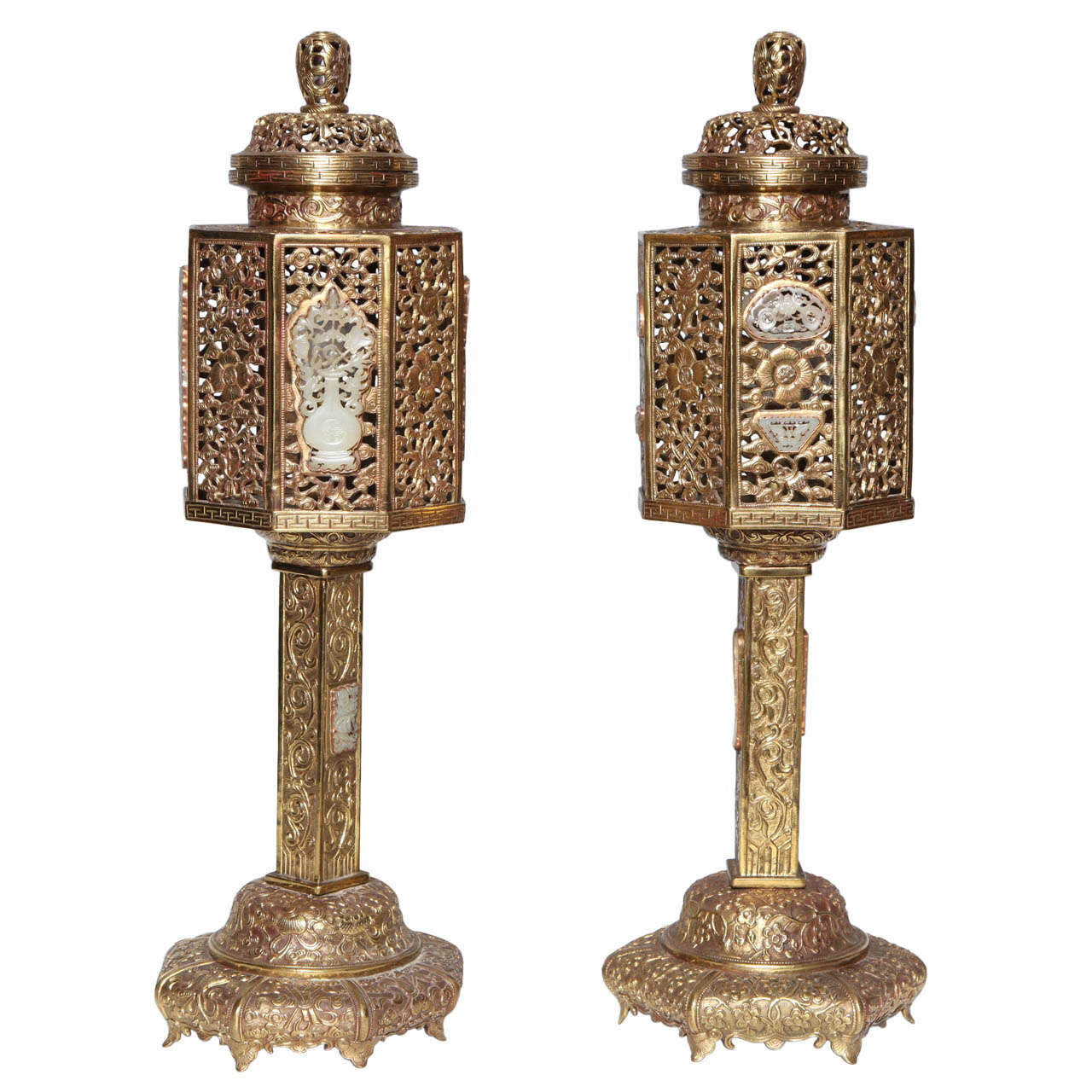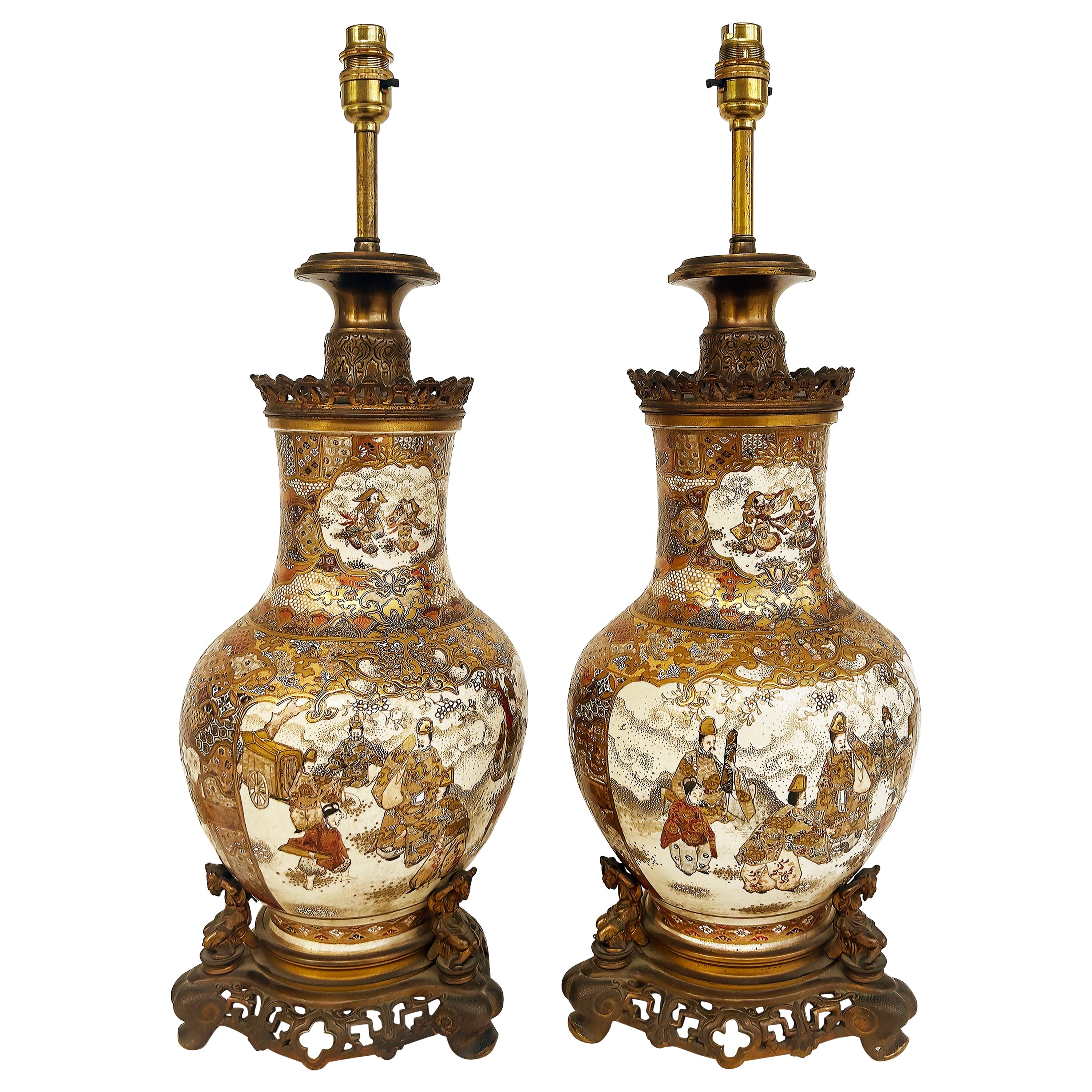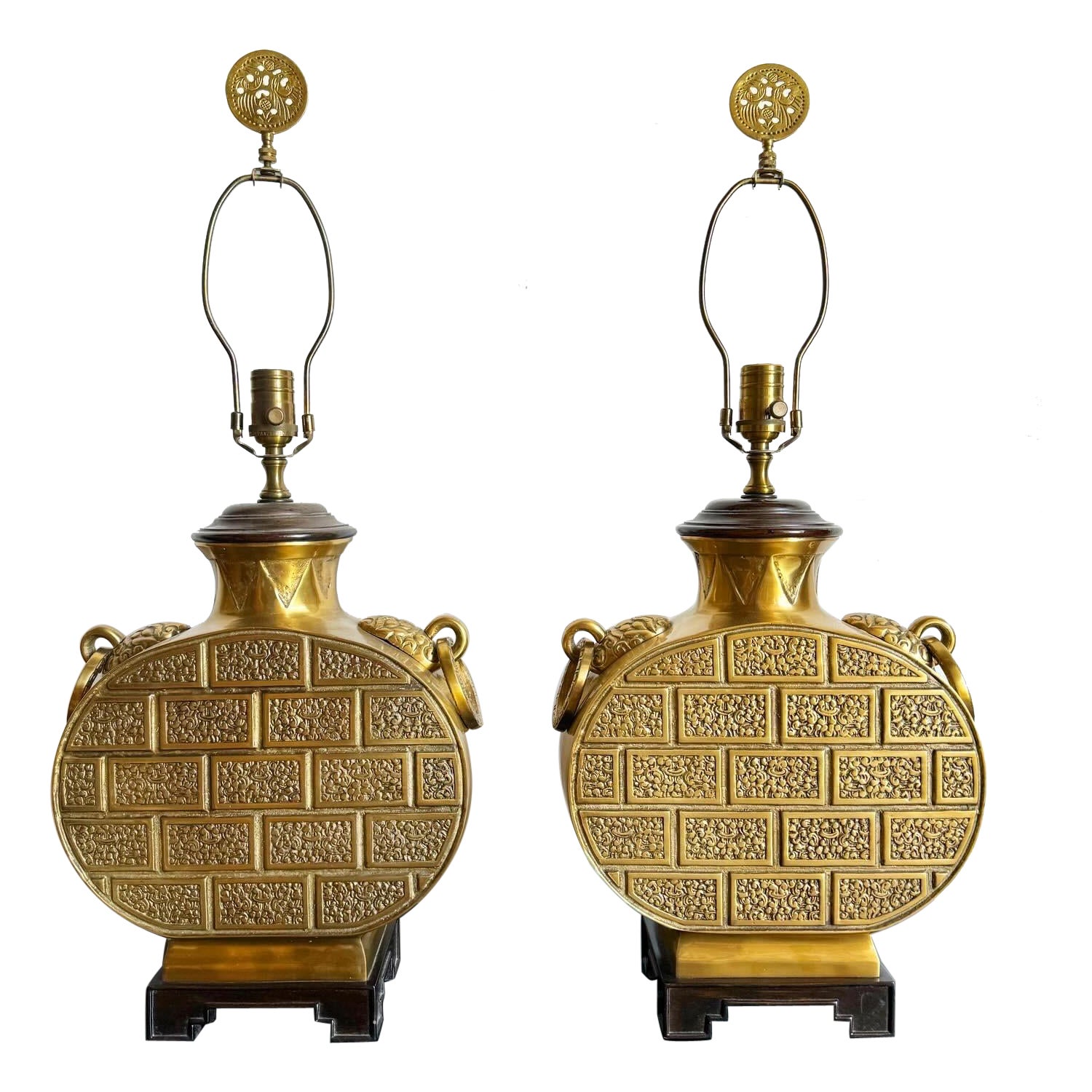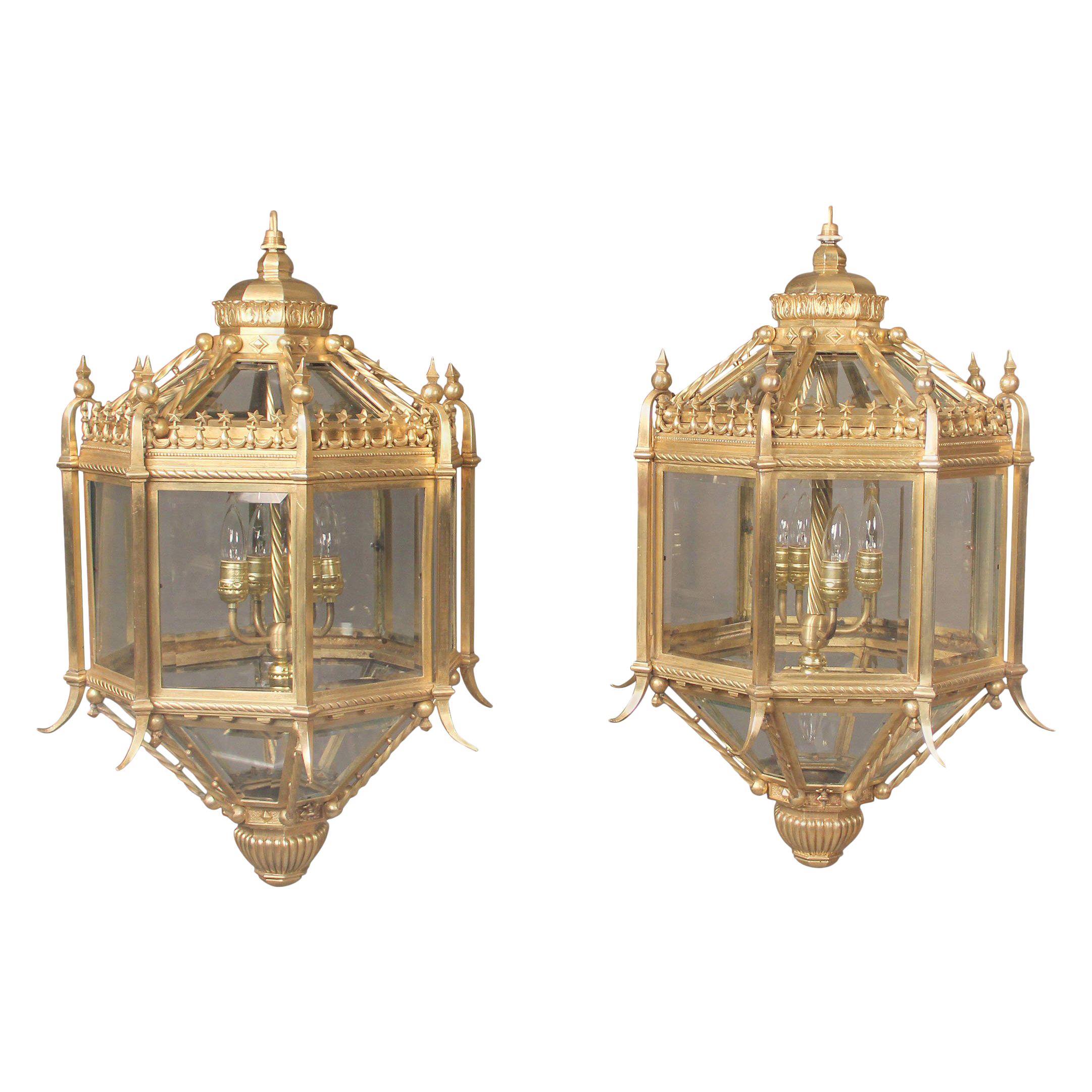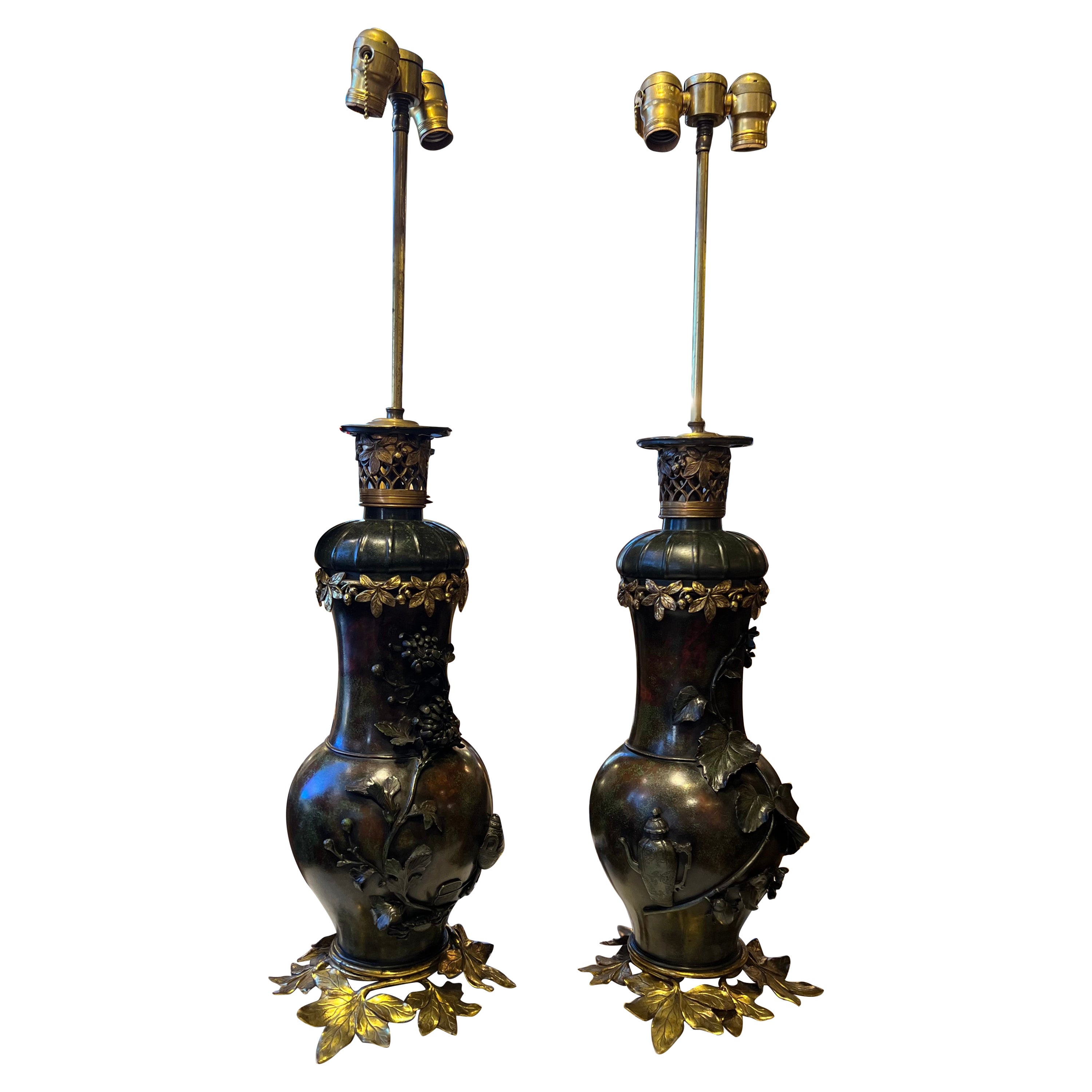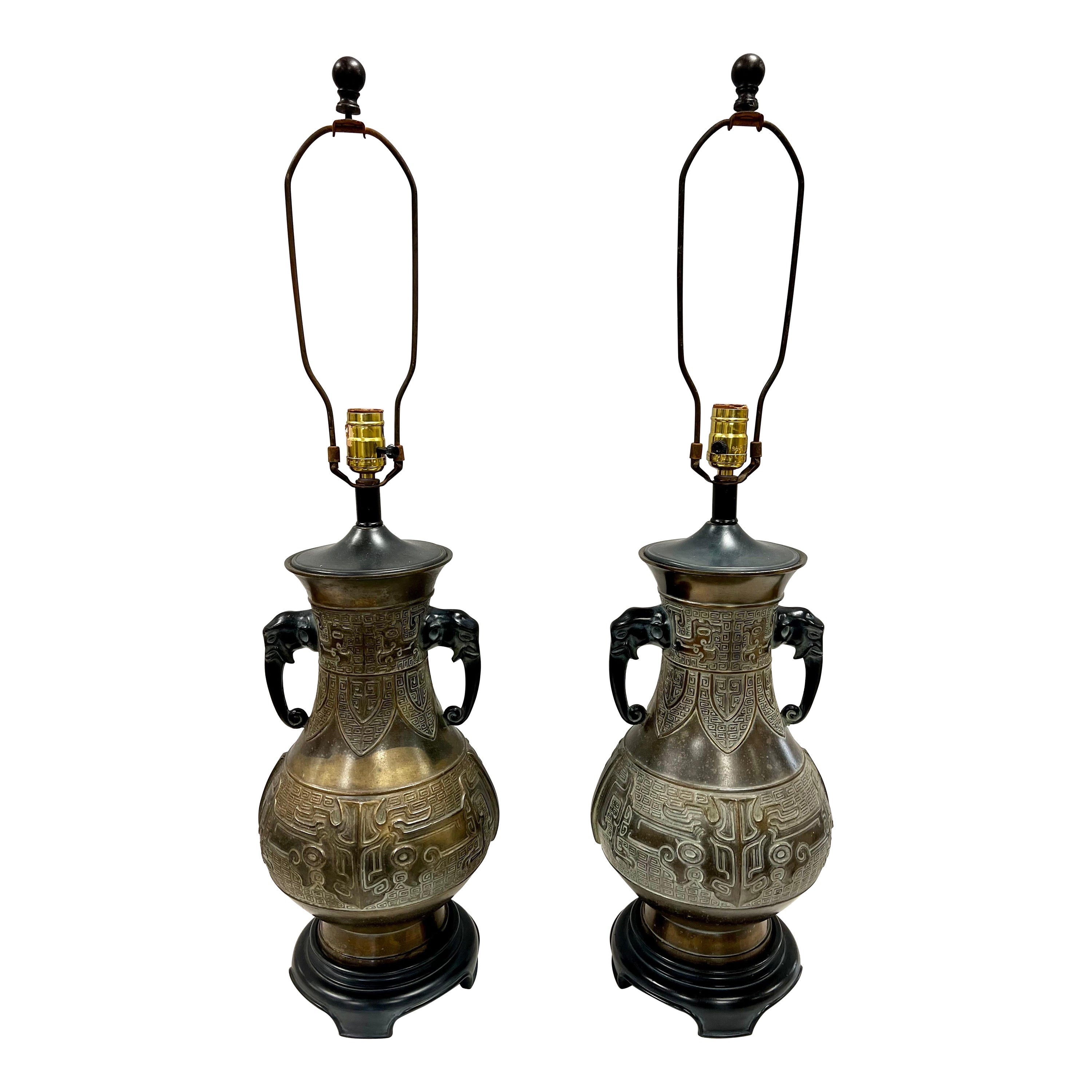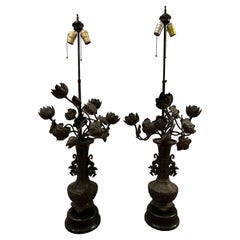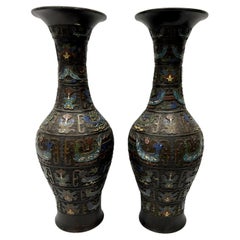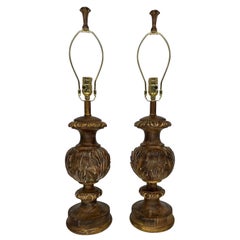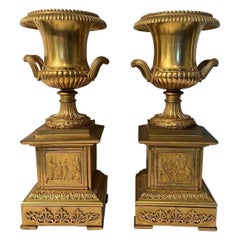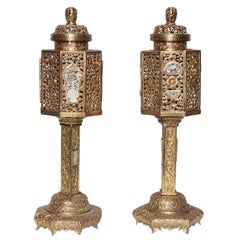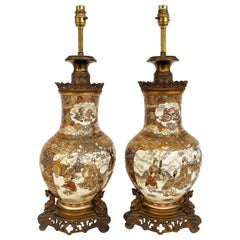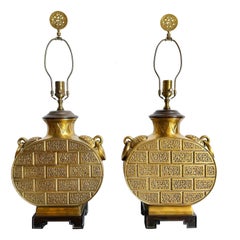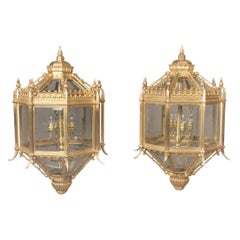Items Similar to Pr, Meiji Period Japanese Gilt Bronze & Parchment Pierced Lanterns Hang Or Table
Want more images or videos?
Request additional images or videos from the seller
1 of 18
Pr, Meiji Period Japanese Gilt Bronze & Parchment Pierced Lanterns Hang Or Table
$2,796
$3,49520% Off
£2,123.07
£2,653.8420% Off
€2,427.89
€3,034.8620% Off
CA$3,906.42
CA$4,883.0220% Off
A$4,344.79
A$5,430.9920% Off
CHF 2,268.71
CHF 2,835.8920% Off
MX$52,871.46
MX$66,089.3220% Off
NOK 28,974.94
NOK 36,218.6720% Off
SEK 27,173.38
SEK 33,966.7220% Off
DKK 18,120.26
DKK 22,650.3220% Off
Shipping
Retrieving quote...The 1stDibs Promise:
Authenticity Guarantee,
Money-Back Guarantee,
24-Hour Cancellation
About the Item
Japanese, (meiji era 1868–1912).
An absolutely stunning pair of Japanese Meiji period gilt bronze and brass lanterns. Each hand cast bronze oval openwork "vase" form lantern crafted in gilt finish depicting Paulownia flowers and vines. Included is the original matching bronze candle insert base which has been electrified in the early 20th century. Applied symbols to cap each panel, parchment backing to the interior for light dissolving and each rest on 4 curved feet.
These were used in their previous home as 4-season porch hanging lanterns but would also work as table lamps.
*Please Note* Due to the old wiring these will be rewired upon purchase, please contact us prior to purchasing so we can rewire as hanging lanterns or table lamps (Your Choice).
History of Japanese lanterns:
In Japan a to¯ro¯ (lantern) is a traditional lantern made of stone, wood, or metal. Like many other elements of Japanese traditional architecture, it originated in China. In Japan, to¯ro¯ were originally used only in Buddhist temples, where they lined and illuminated paths and lighted lanterns were then considered an offering. In its complete, original form the lantern represents five elements of Buddhist cosmology: Bottom touching the ground, represents chi, the earth, the next section represents sui, or water, ka or fire, is represented by the section encasing the lantern's light or flame, while fu¯ (air) and ku¯ (void or spirit) are represented by the last two sections, top-most and pointing towards the sky. These last two sections express the idea that after death our physical bodies will go back to their original, elemental form.
- Dimensions:Height: 9.75 in (24.77 cm)Diameter: 6 in (15.24 cm)
- Style:Meiji (Of the Period)
- Materials and Techniques:
- Place of Origin:
- Period:
- Date of Manufacture:19th Century
- Condition:Wear consistent with age and use. Minor wear commensurate with age and use including some gilt wear and areas of parchment loss to interior.
- Seller Location:Atlanta, GA
- Reference Number:1stDibs: LU7838240665902
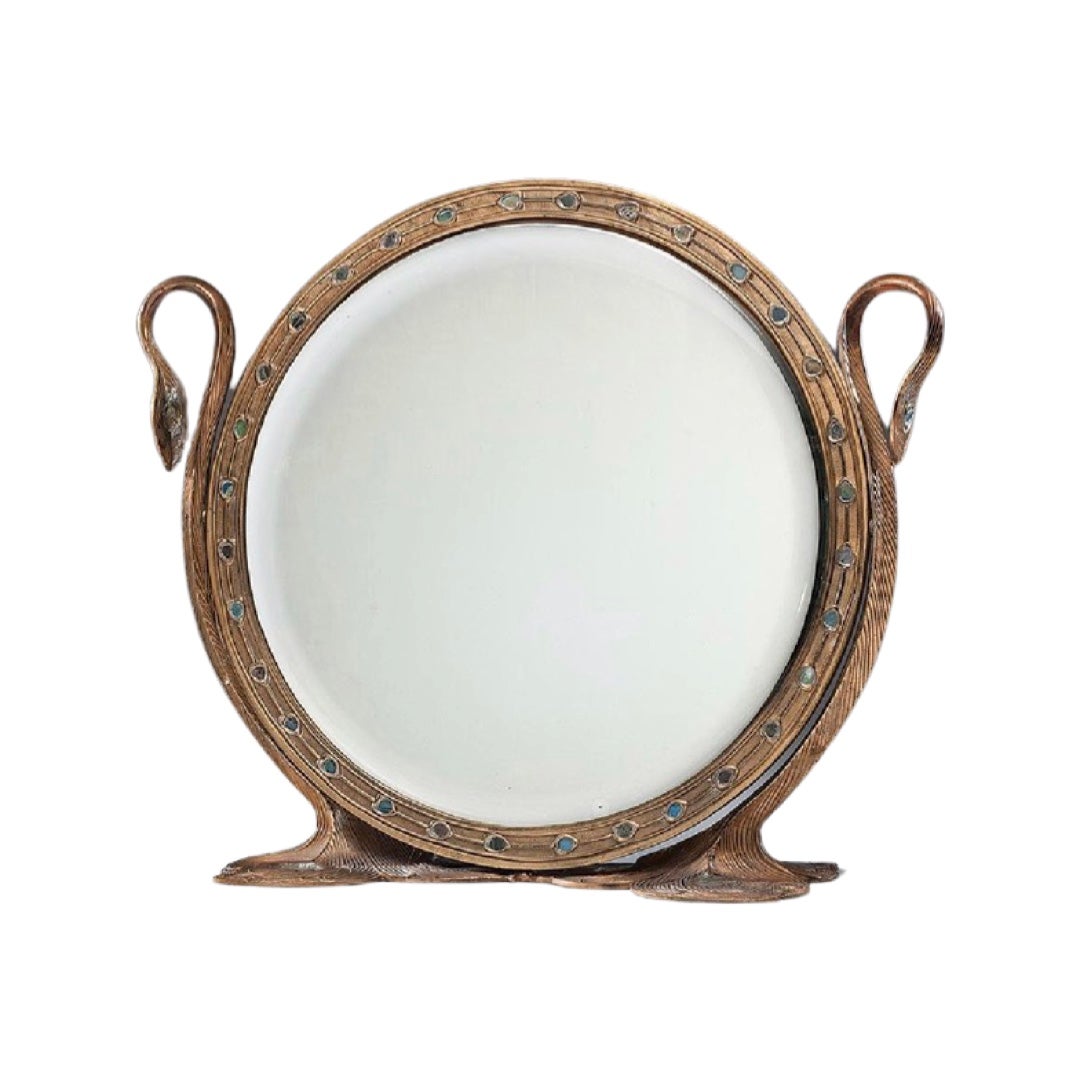
About the Seller
5.0
Platinum Seller
Premium sellers with a 4.7+ rating and 24-hour response times
Established in 2012
1stDibs seller since 2022
205 sales on 1stDibs
Typical response time: <1 hour
- ShippingRetrieving quote...Shipping from: Randolph, MA
- Return Policy
Authenticity Guarantee
In the unlikely event there’s an issue with an item’s authenticity, contact us within 1 year for a full refund. DetailsMoney-Back Guarantee
If your item is not as described, is damaged in transit, or does not arrive, contact us within 7 days for a full refund. Details24-Hour Cancellation
You have a 24-hour grace period in which to reconsider your purchase, with no questions asked.Vetted Professional Sellers
Our world-class sellers must adhere to strict standards for service and quality, maintaining the integrity of our listings.Price-Match Guarantee
If you find that a seller listed the same item for a lower price elsewhere, we’ll match it.Trusted Global Delivery
Our best-in-class carrier network provides specialized shipping options worldwide, including custom delivery.More From This Seller
View AllLarge Scale Meiji Japanese Bronze Table Lamp W/ Floral Candelabra Mounts
Located in Atlanta, GA
Japanese, circa 1900.
A pair of antique Japanese bronze table lamps. The lamps feature a detailed body showcasing applied lotus blossom and bird motifs to center, traditional Japanese motifs throughout and good quality guardian handles to each.
These have a very unusual blossom floral and vine...
Category
Antique Early 1900s Japanese Aesthetic Movement Table Lamps
Materials
Bronze
$3,116 Sale Price / set
20% Off
Pr. 19th C. Meiji Japanese Champleve Inset Bronze Vases Signed 21.25"
Located in Atlanta, GA
Japanese, 19th century.
This exquisite pair of 19th-century Japanese Champlevé or cloisonne style inset bronze vases represents a masterful blend of artistry and craftsmanship. Each...
Category
Antique 19th Century Japanese Chinese Export Metalwork
Materials
Bronze, Enamel
$1,996 Sale Price / set
20% Off
Pair, Fine Arts Lamp Company Gilt wood Baroque Style Table Lamps
By Fine Arts Intl.
Located in Atlanta, GA
Fine Arts Lamp Company, 20th century.
21" h to socket
29.5" h to finial
"The company’s artistic heritage began in the New York glassmaking factory founded by Max Blumberg in the late nineteenth century. In 1940, his son Jack Blumberg gathered the finest designers, sculptors, and decorative artists to fulfill their shared vision of becoming the world’s premier lighting manufacturer, and Fine Art Lamps was born.
In 1965, Jack’s son Max carried on the commitment of his grandfather and father to design excellence and superb workmanship. In 1976, the company moved to Miami and expanded its operations capitalizing on the dynamic and creative culture thriving in South Florida at the time. Over time, Fine Art has been honored with numerous design awards, including the prestigious ART Manufacturer of the Year Award an unprecedented nine times, distinguishing the company beyond compare, and cementing our induction into the ART Hall of Fame.
In early 2018, as Max looked to enjoy new adventures in retirement, the company was acquired by his long-term executive team...
Category
20th Century American Baroque Table Lamps
Materials
Giltwood
$1,196 Sale Price / set
20% Off
19th Century Neoclassical Gilt Bronze Grand Tour Mounted Urns, a Pair
Located in Atlanta, GA
These urns are extremely high quality in decoration and casting. True Neoclassical gilt bronze grand tour objects and what makes it better? A PAIR!.
Category
Antique 19th Century Urns
Materials
Bronze
$3,160 Sale Price / set
20% Off
19th Century, French Grand Tour "4 Seasons" Bronze & Sienna Marble Urn Lamps
Located in Atlanta, GA
French, 19th century.
A pair of good quality bronze urns decorated with playful cherub or putti. The putti figures each represent one of the four season graces after the original my...
Category
Antique Late 19th Century French Grand Tour Table Lamps
Materials
Siena Marble, Bronze
$2,316 Sale Price / set
20% Off
Monumental 19th Century French Gilt Bronze Egyptian Revival Candleabrum - Wired
Located in Atlanta, GA
A superb and intricately crafted pair of French gilt bronze candelabras, dating to the 19th century, exemplifying the grandeur and sophistication of the Egyptian Revival aesthetic. T...
Category
Antique Mid-19th Century French Egyptian Revival Candle Lamps
Materials
Bronze
$6,316 Sale Price / set
20% Off
You May Also Like
Pair of Gilt Bronze Chinese Lanterns, Traditional Style with Inlaid Jade Plaques
Located in New York, NY
A pair of gilded bronze Chinese lanterns in traditional style with inlaid Jade Plaques. The design of the fret work includes floral motifs as well as meand...
Category
Antique 19th Century Chinese Table Lamps
Materials
Jade, Brass
19th-Century Japanese Satsuma Vases Mounted as Lamps, Gilt Bronze Mounts, Pair
Located in Miami, FL
19th-Century Japanese Satsuma Vases Mounted as Lamps, Gilt Bronze Mounts, Pair
Offered for sale is a rare and fine pair of 19th century Japanese Satsuma vases mounted as lamps. The...
Category
Antique 19th Century Japanese Japonisme Table Lamps
Materials
Bronze
$6,500 Sale Price / set
48% Off
Chinoiserie Bulbous Brass “Kotel” Lamps - a Pair
Located in Delray Beach, FL
Add a touch of Eastern elegance to your decor with this pair of Chinoiserie Bulbous Brass "Kotel" Lamps. These lamps feature ornate brass bases with traditional Chinoiserie motifs, o...
Category
Vintage 1960s Unknown Chinoiserie Floor Lamps
Materials
Brass
Fine Pair of Late 19th Century Gilt Bronze Five-Light Lanterns
Located in Long Island City, NY
A fine pair of late 19th century gilt bronze five-light lanterns.
The lanterns of octagonal form with a pieced gallery with stars circling the top. Five interior lights.
Category
Antique Late 19th Century French Belle Époque Lanterns
Materials
Bronze
Antique Pair Japanese Painted Bronze Vases Mounted as Lamps
Located in Scottsdale, AZ
Antique Pair Japanese Painted Bronze Vases Mounted as Lamps. Beautiful detailing, must see images.
Category
Antique 19th Century French Victorian Table Lamps
Materials
Bronze, Ormolu
$1,480 Sale Price / set
20% Off
Chinese Brass Urn Table Lamps With Elephant Handles
Located in West Hartford, CT
Vintage Chinese archaistic urn form lamps having molded geometric designs and elephant handles. 22.5”h to top of socket.
Category
Mid-20th Century Chinese Chinoiserie Table Lamps
Materials
Brass
$760 Sale Price / set
57% Off
More Ways To Browse
Bronze Skier
Asian Table Gold
Japanese Meiji Panel
Japanes Lanterns
Japanese Gilt Wood
Gilt Bronze Asian
Antique Parchment Paper
19th Century Hanging Lamps
Buddhist Flowers
Antique Old Lanterns
Old Antique Lantern
Lantern Light Japanese
Japanese Paper Lantern
Antique Hanging Brass Lamp
Antique Water Lamp
Gilt Metal Flower Table
Japanese Hanging Light
Chinese Bronze Vase Lamp
